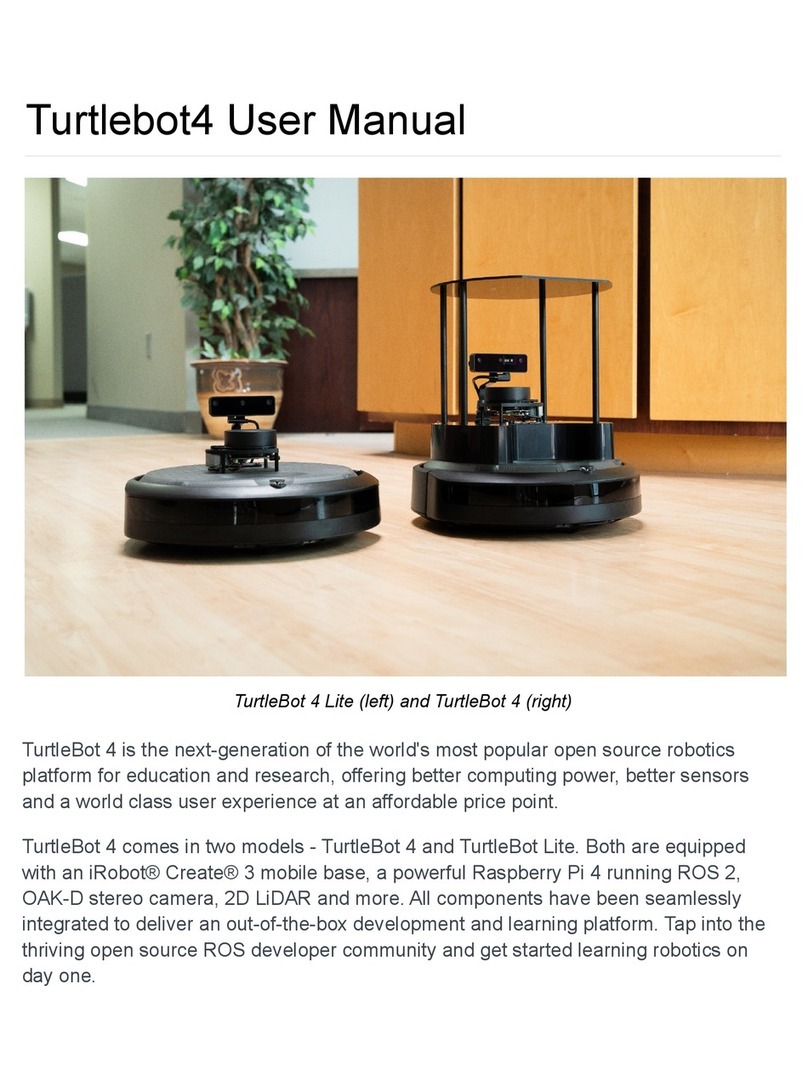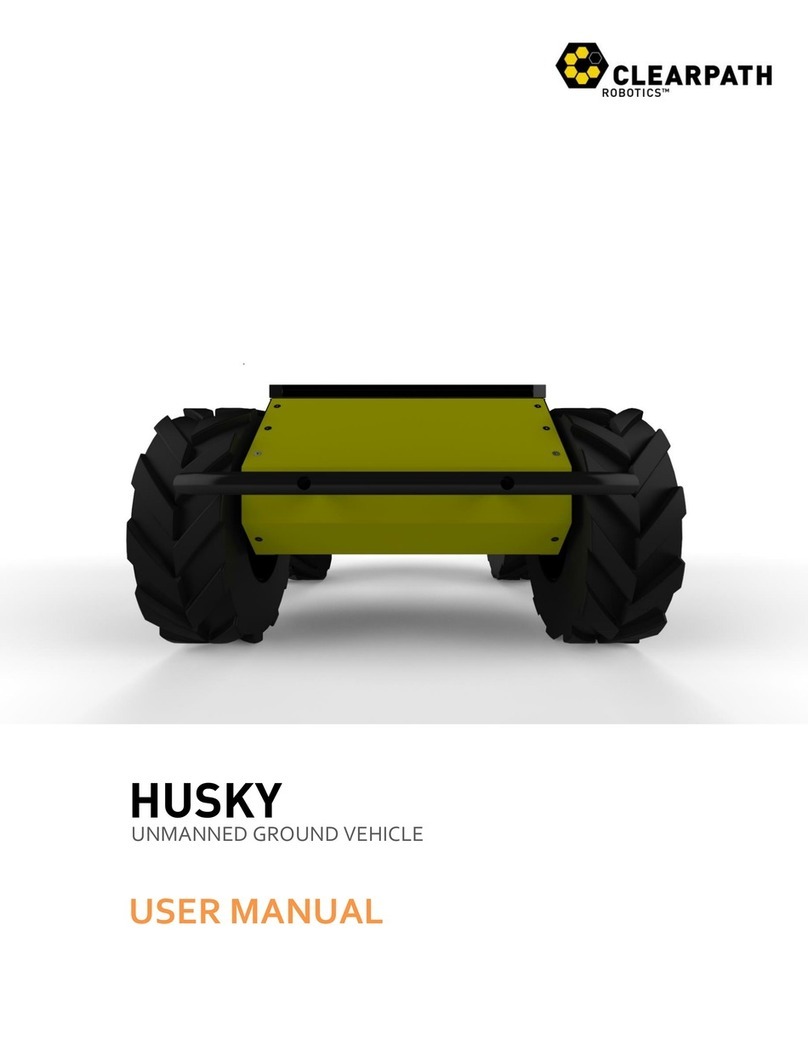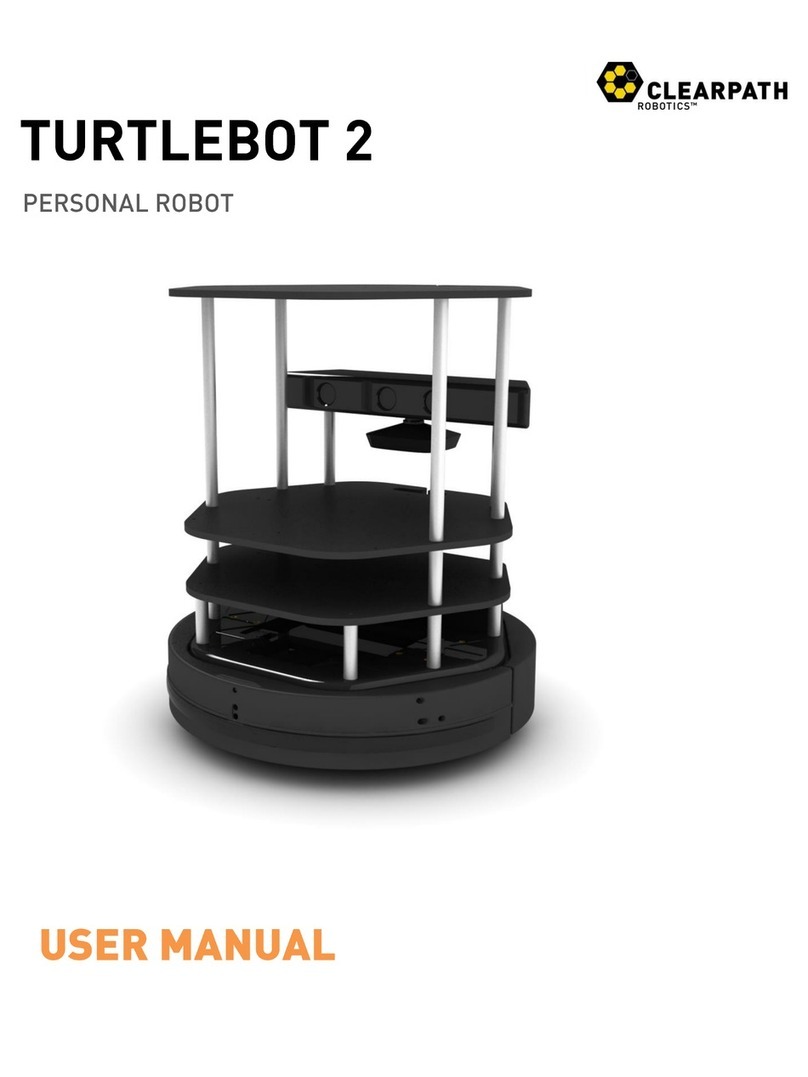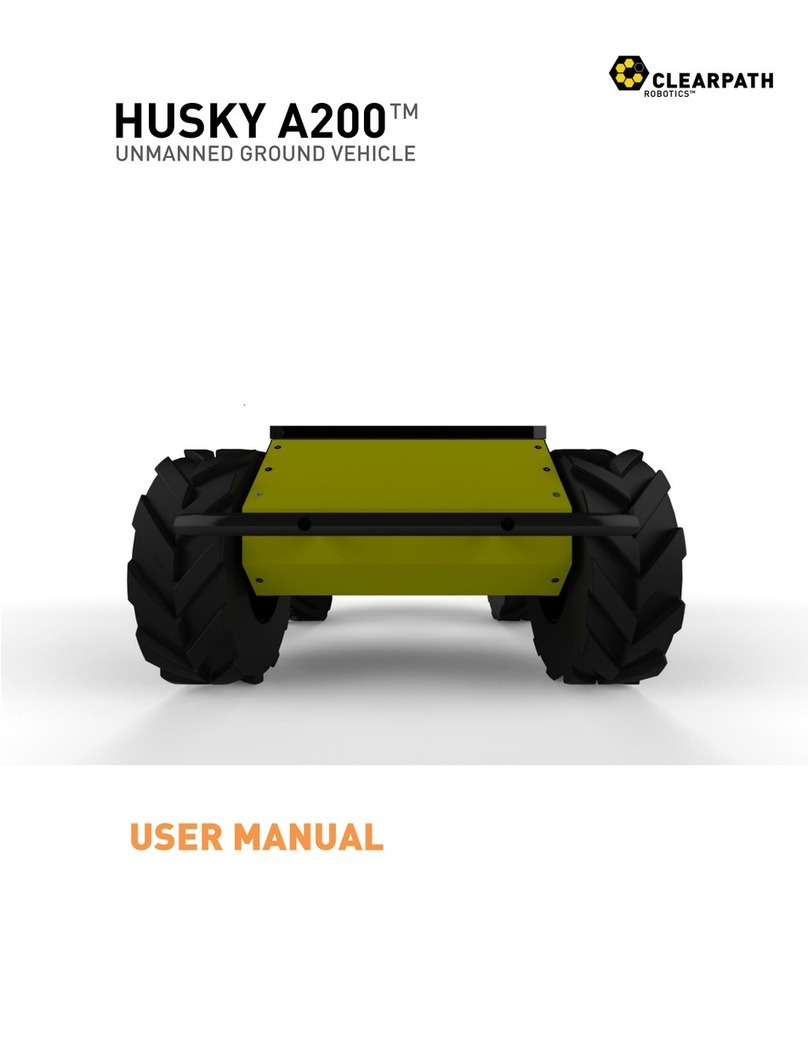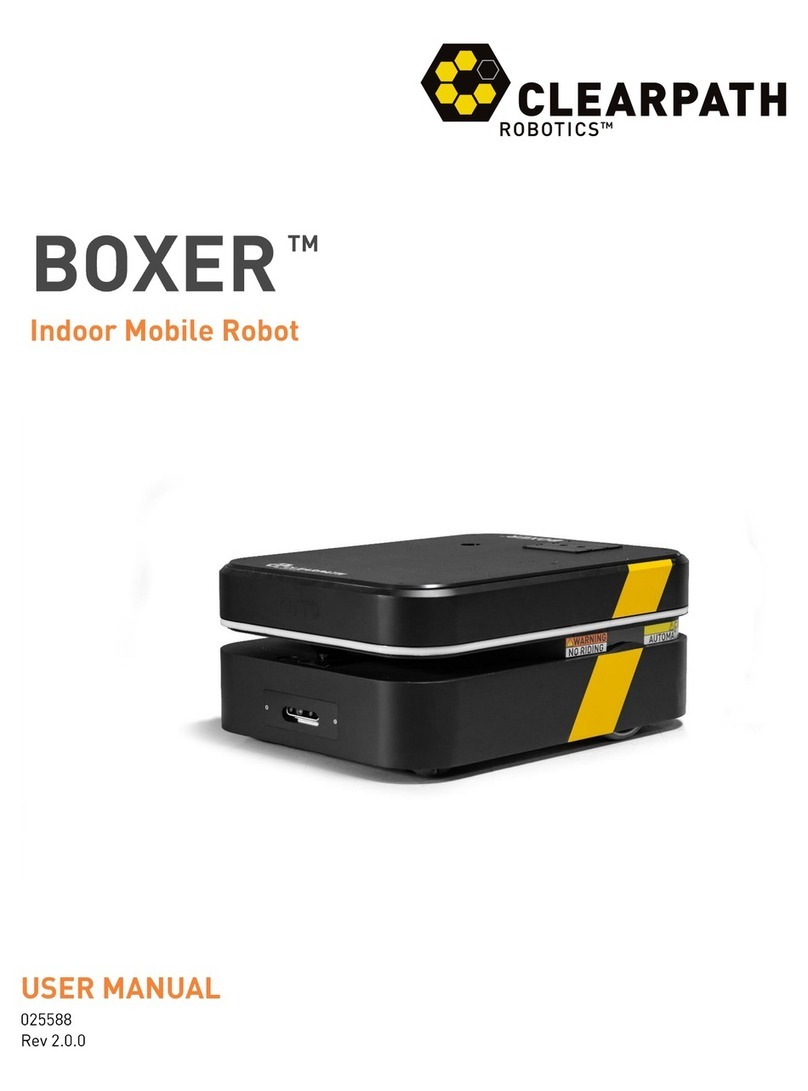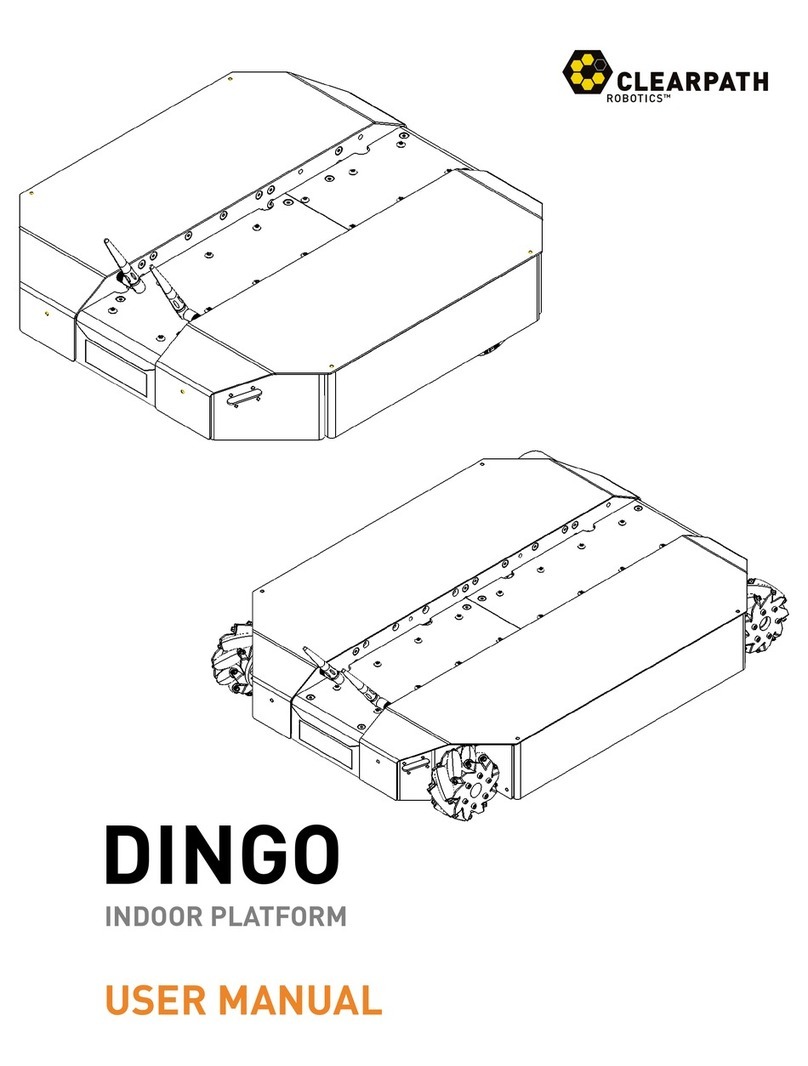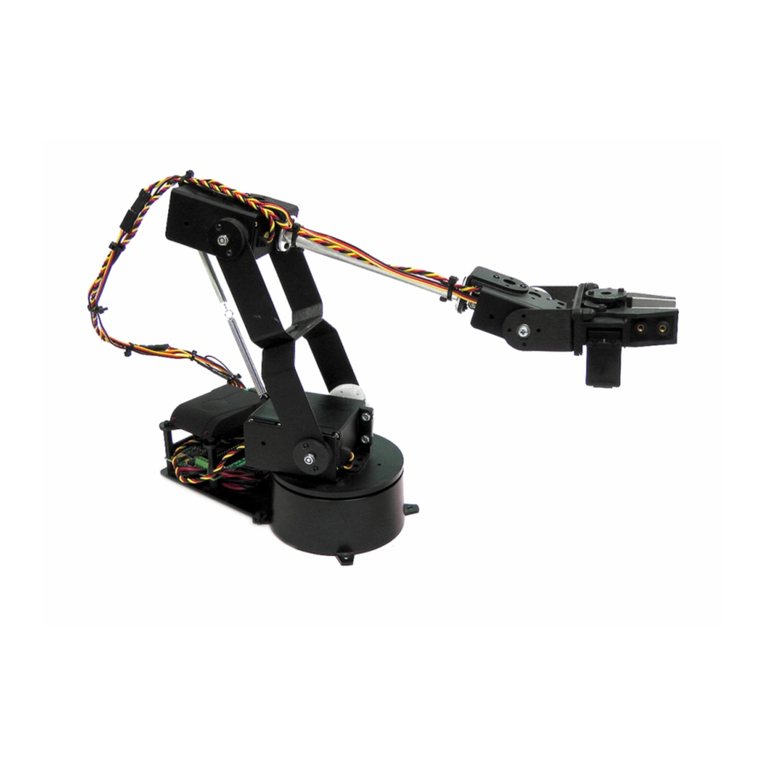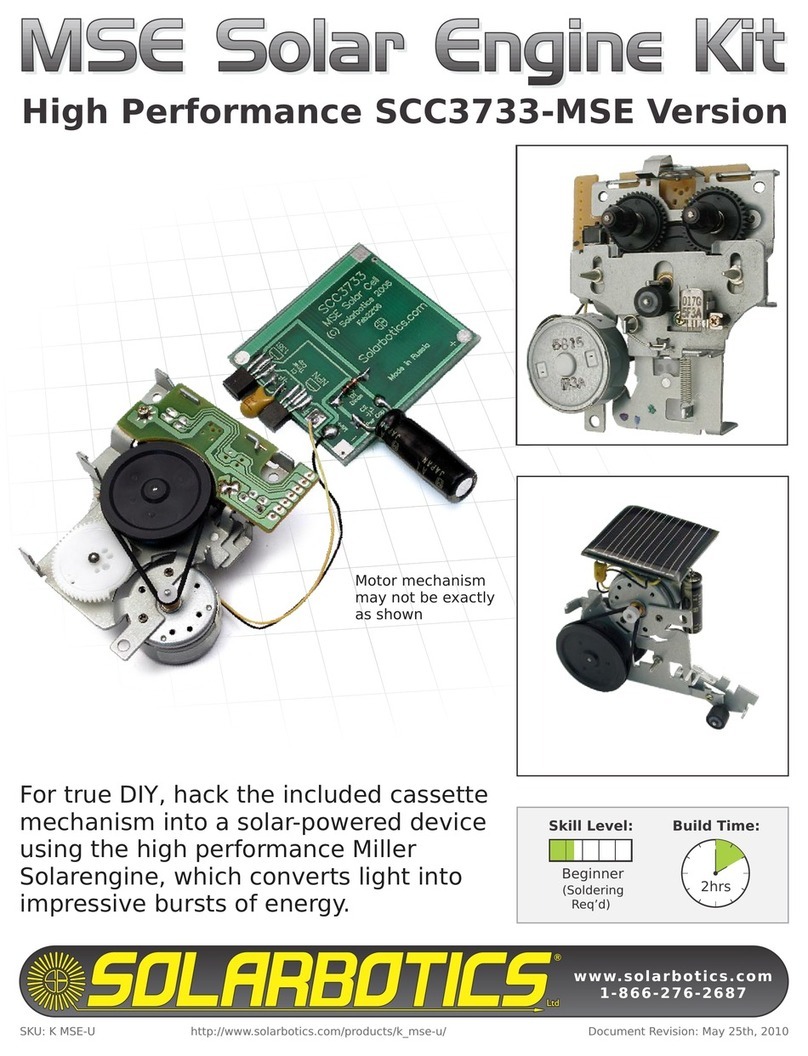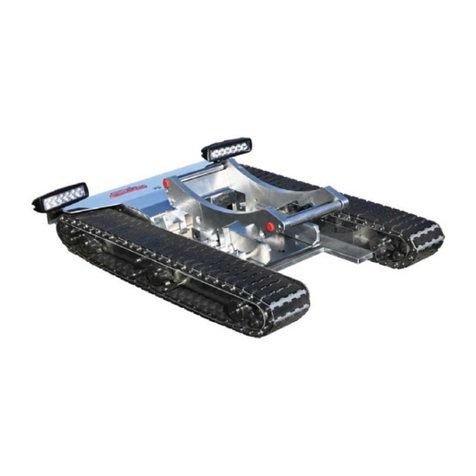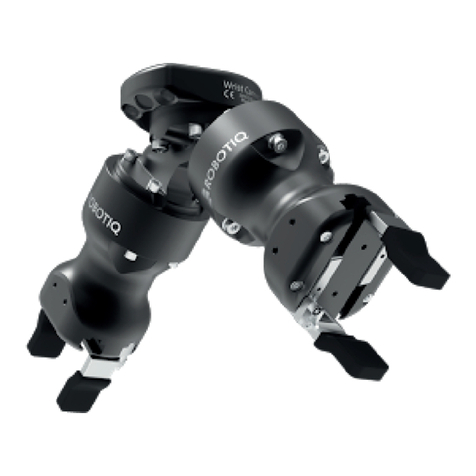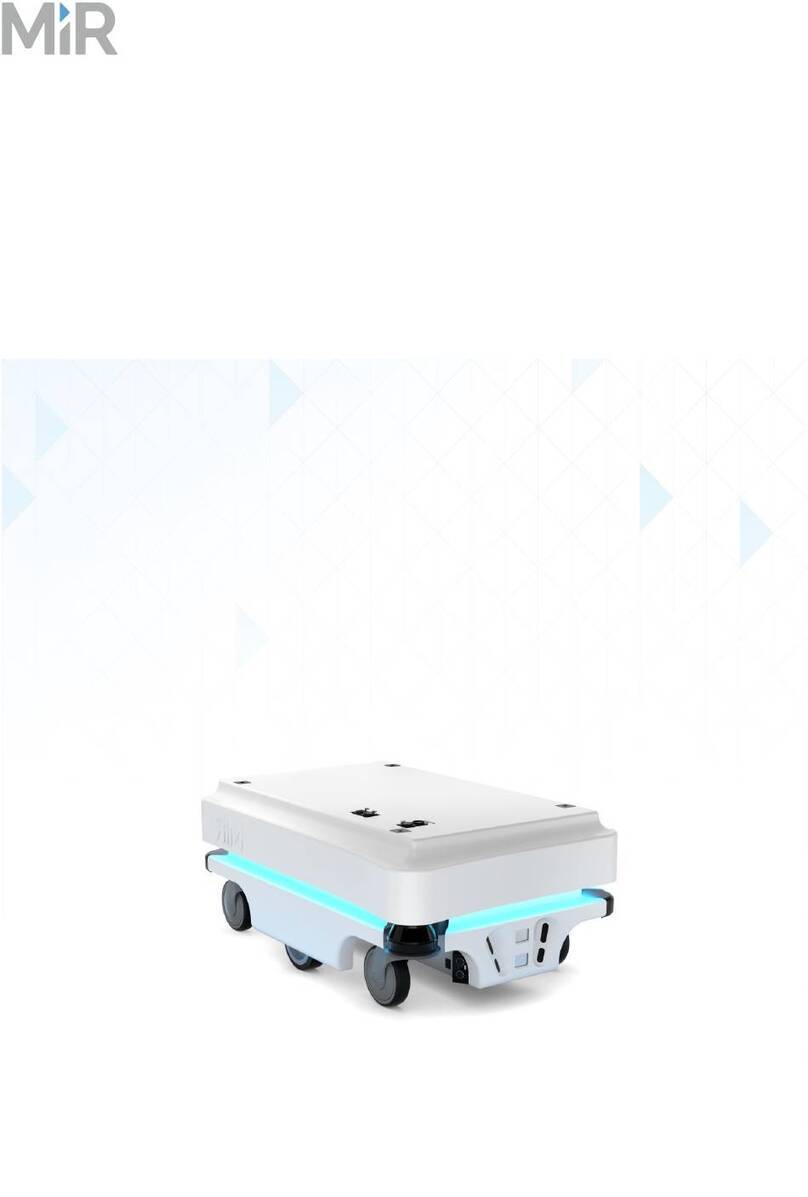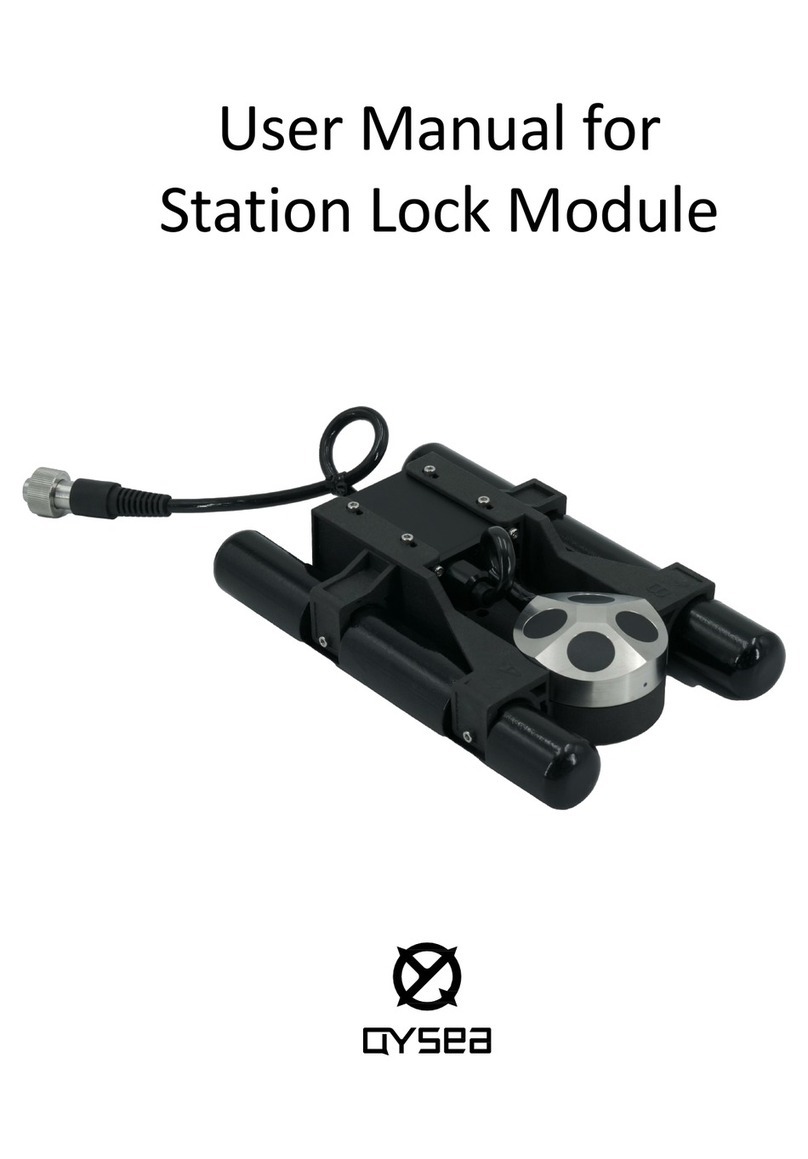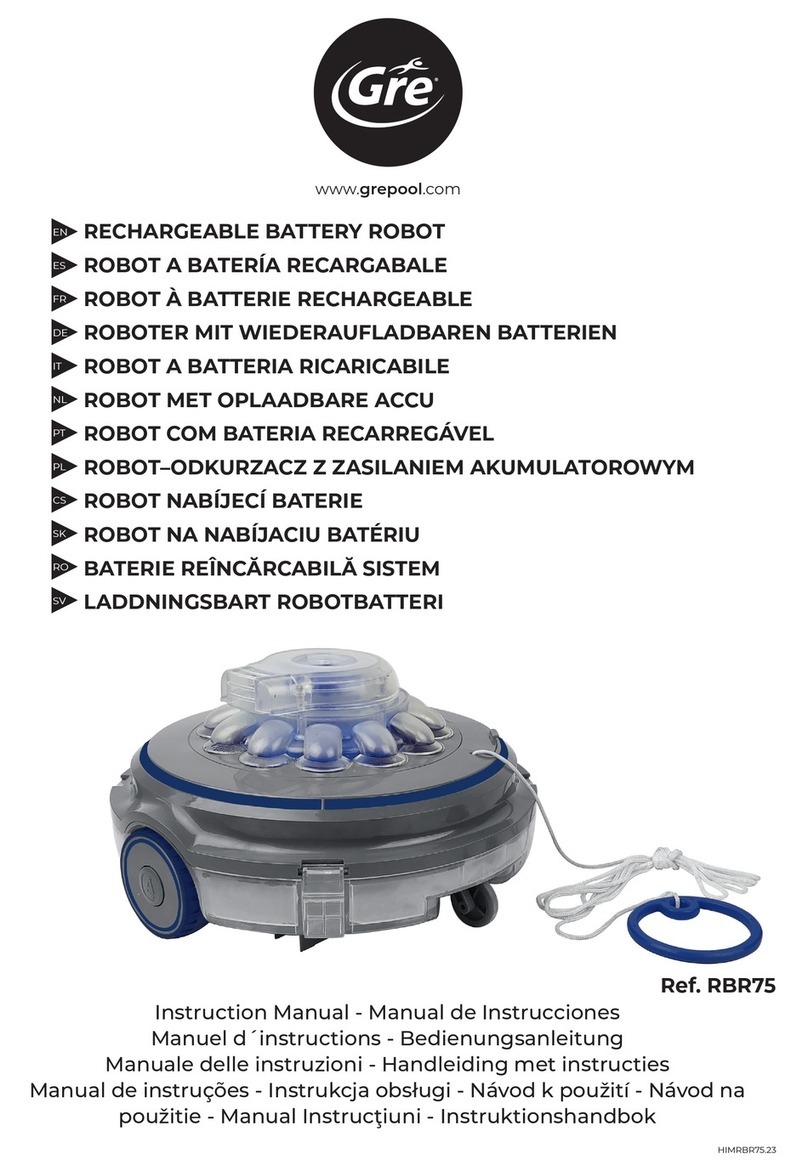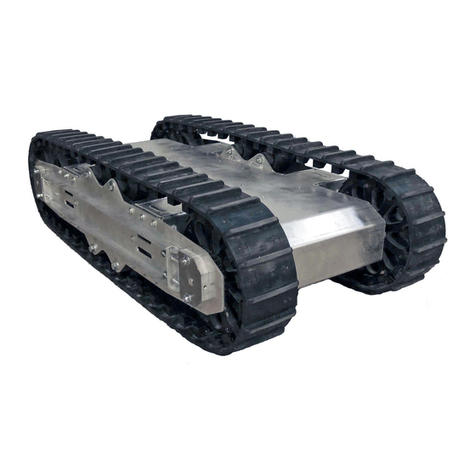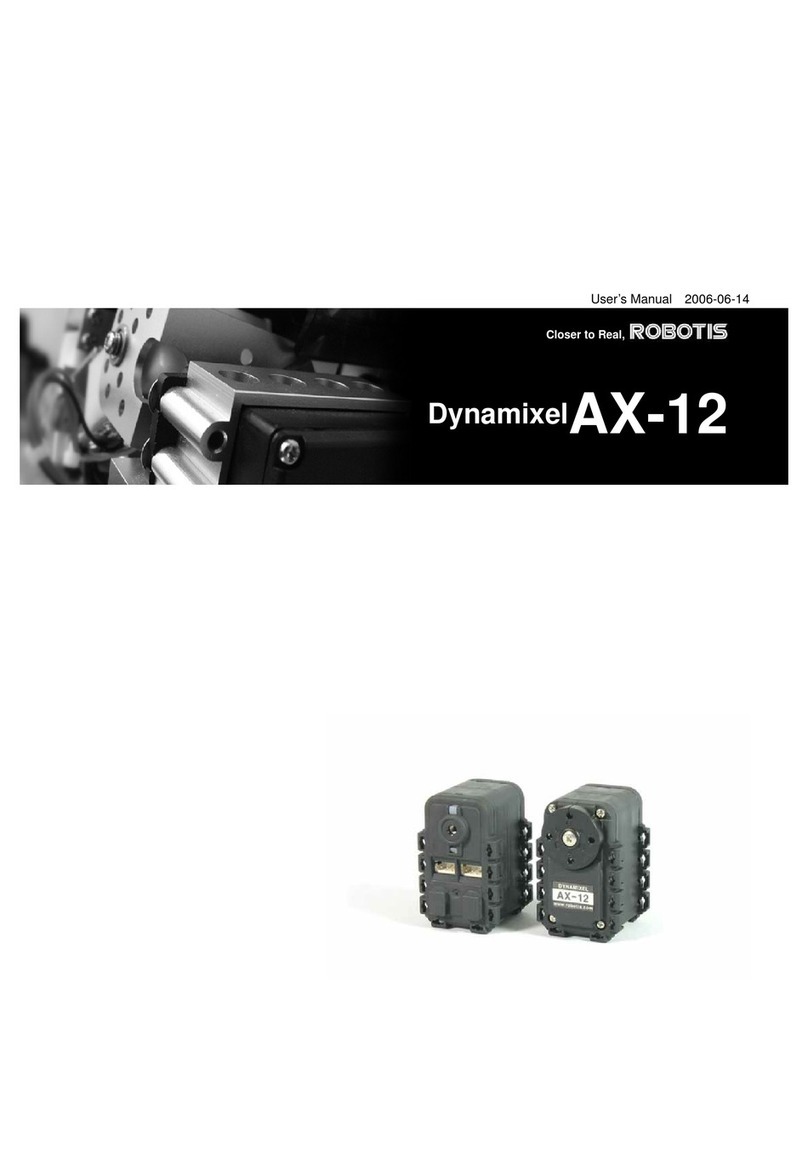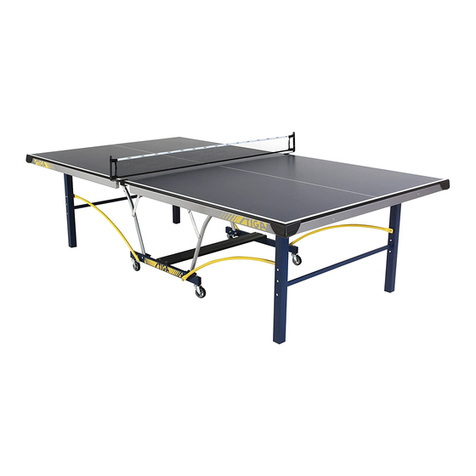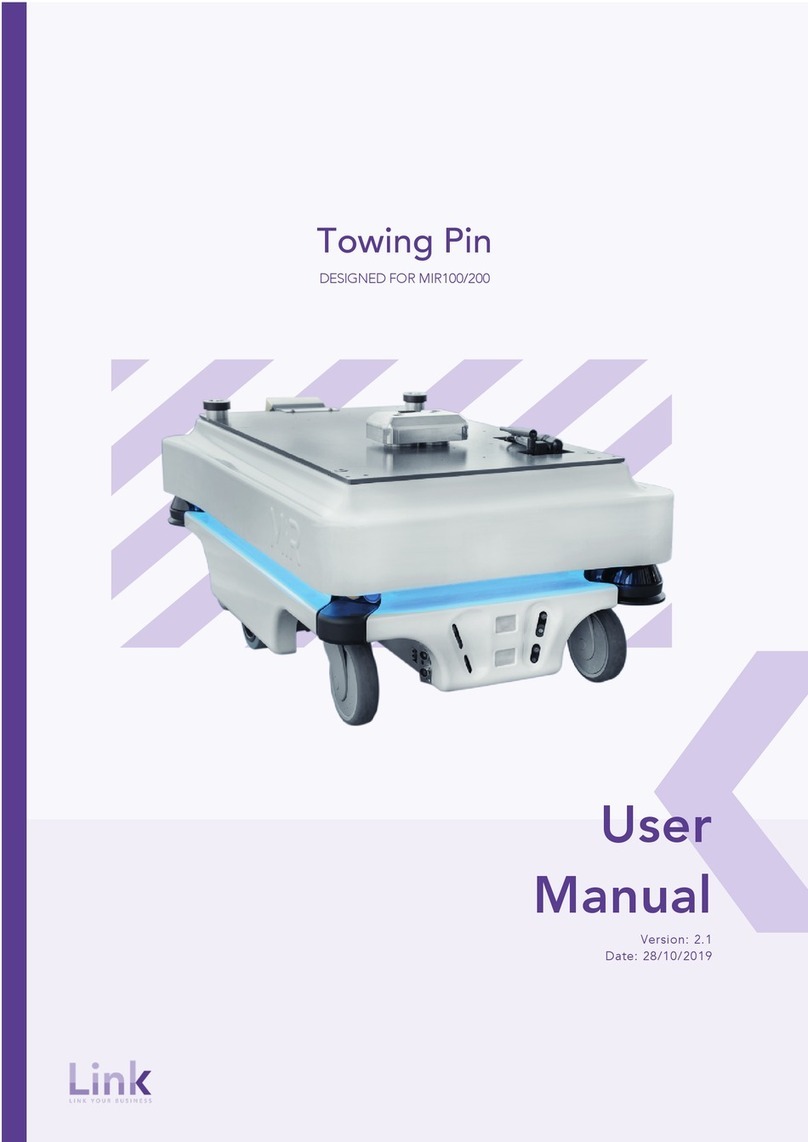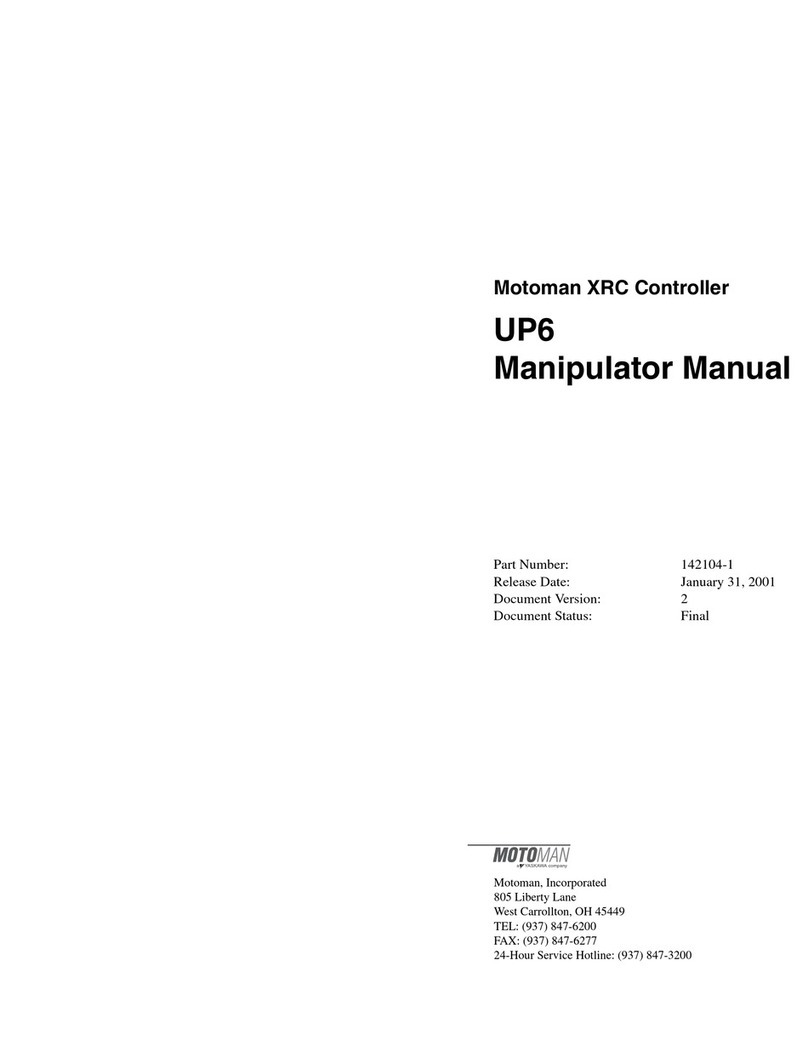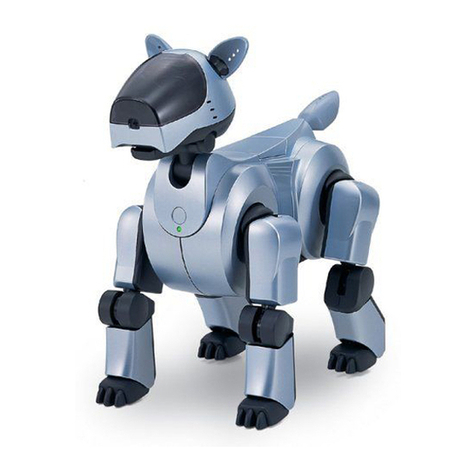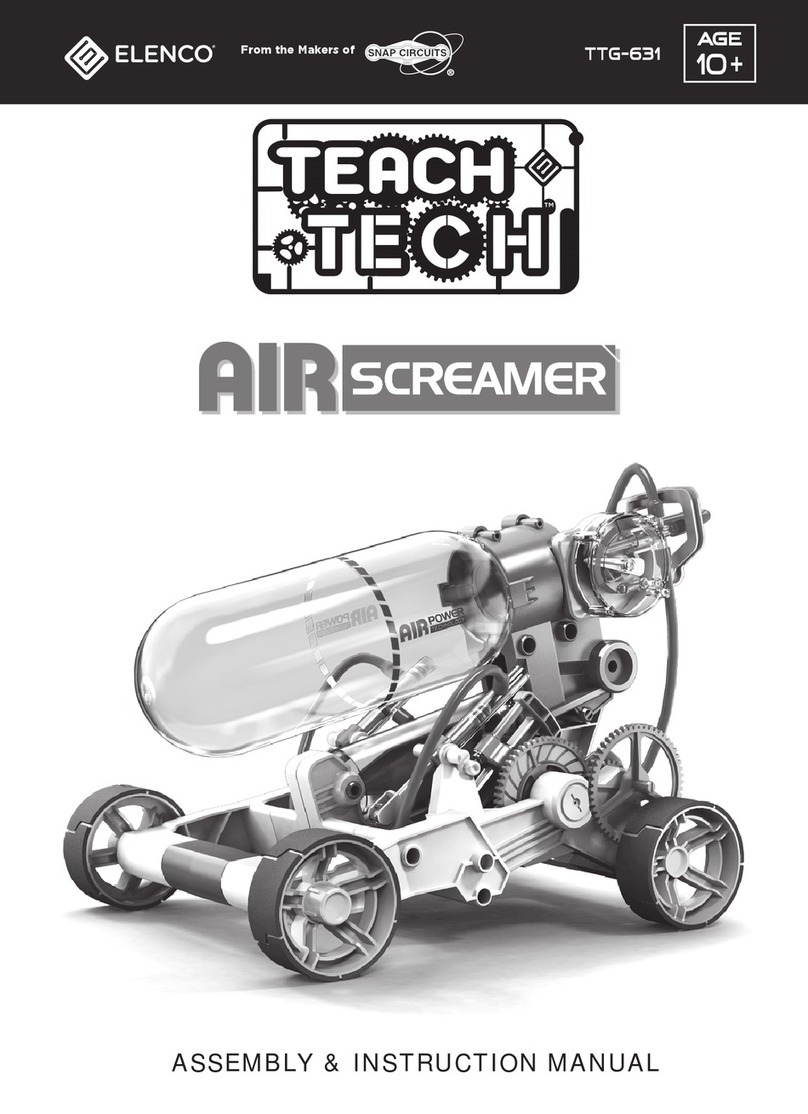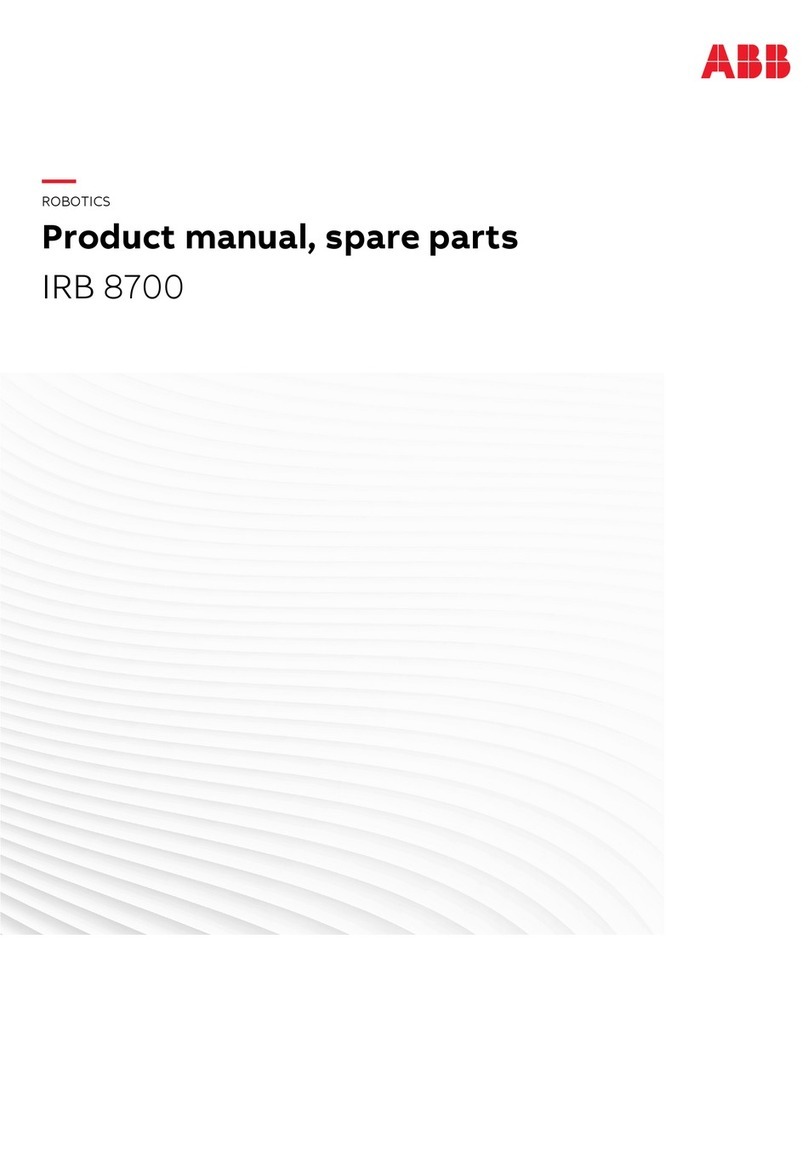CLEARPATH ROBOTICS KINGFISHER USV User manual

KINGFISHER USVKINGFISHER USV
UNMANNED SURFACE VESSEL
USER MANUAL
UNMANNED SURFACE VESSEL
USER MANUAL

CONTENTS
1 Introduction 3
1.1 What’s Included . . . . . . . . . . . . . . . . . . . . . . . . . . . . . . . . . . . . . . . 3
1.2 What’s Required . . . . . . . . . . . . . . . . . . . . . . . . . . . . . . . . . . . . . . . 3
2 The Basics 4
2.1 Hardware Architecture . . . . . . . . . . . . . . . . . . . . . . . . . . . . . . . . . . . . 5
2.2 Status Indicators . . . . . . . . . . . . . . . . . . . . . . . . . . . . . . . . . . . . . . . 6
2.3 R/C Controller . . . . . . . . . . . . . . . . . . . . . . . . . . . . . . . . . . . . . . . . 7
2.4 System Specifications . . . . . . . . . . . . . . . . . . . . . . . . . . . . . . . . . . . . 8
3 Safety 9
3.1 General Warnings . . . . . . . . . . . . . . . . . . . . . . . . . . . . . . . . . . . . . . 9
3.2 Electrical System . . . . . . . . . . . . . . . . . . . . . . . . . . . . . . . . . . . . . . 9
3.3 Lifting and Transport . . . . . . . . . . . . . . . . . . . . . . . . . . . . . . . . . . . . . 9
4 Getting Started 11
4.1 Platform Deployment . . . . . . . . . . . . . . . . . . . . . . . . . . . . . . . . . . . . . 11
4.2 Battery Pack Installation . . . . . . . . . . . . . . . . . . . . . . . . . . . . . . . . . . . 12
4.3 Powering On . . . . . . . . . . . . . . . . . . . . . . . . . . . . . . . . . . . . . . . . . 13
4.4 Backup R/C Operation . . . . . . . . . . . . . . . . . . . . . . . . . . . . . . . . . . . . 13
5 ROS Operation 14
5.1 PC Setup . . . . . . . . . . . . . . . . . . . . . . . . . . . . . . . . . . . . . . . . . . 14
5.2 SSH Connection . . . . . . . . . . . . . . . . . . . . . . . . . . . . . . . . . . . . . . . 14
5.3 Developing with the Onboard PC . . . . . . . . . . . . . . . . . . . . . . . . . . . . . . . 15
5.4 ROS Remote Setup . . . . . . . . . . . . . . . . . . . . . . . . . . . . . . . . . . . . . 15
5.5 ROS Remote Teleoperation . . . . . . . . . . . . . . . . . . . . . . . . . . . . . . . . . 16
5.6 Key Topics . . . . . . . . . . . . . . . . . . . . . . . . . . . . . . . . . . . . . . . . . . 17
6 Payload Integration 18
2

7 Maintenance 19
7.1 Charging . . . . . . . . . . . . . . . . . . . . . . . . . . . . . . . . . . . . . . . . . . . 19
7.2 Battery Pack . . . . . . . . . . . . . . . . . . . . . . . . . . . . . . . . . . . . . . . . . 19
7.3 Electronics Bay . . . . . . . . . . . . . . . . . . . . . . . . . . . . . . . . . . . . . . . 19
8 Tips and Troubleshooting 20
9 Service and Support 21
3

1 INTRODUCTION
Clearpath Robotics Kingfisher is a rugged and easy-to-use Unmanned Surface Vessel (USV) for research and
rapid prototyping applications. This guide contains information about the setup, operation, and maintenance
of your Kingfisher USV.
1.1 What’s Included
Included with each Kingfisher are the following:
• 1x Clearpath Robotics Kingfisher
• 2x 14.4V NiMH Battery Pack
• 1x Battery Pack Charger
• 1x Futaba Backup Remote Control (R/C)
• 1x Payload Connector Dummy Plug
• 1x Payload Connector Adapter Kit (plug and pins)
• 1x Ethernet Connector Adapter Kit
Each Kingfisher deployment (one or more Kingfisher vessels) also includes:
• Clearpath Robotics Base Station
• Base Station Battery
• Base Station Battery Charger
1.2 What’s Required
The embedded PC onboard Kingfisher runs Ubuntu Linux 12.04 and ROS Hydro. For maximum simplicity,
a development computer should be running the same operating system as the onboard computer; however,
any version of Ubuntu supported by ROS Hydro will be adequate. If a laptop option was purchased with
Kingfisher it will have been already configured with ROS and the appropriate ROS packages. For assistance
setting up the development computer, please see the PC Setup section on page 14.
Kingfisher may also be driven using the included Futaba R/C controller as described in the Getting Started sec-
tion on page 11. However, the R/C controller is intended as a backup to allow powered retrieval of Kingfisher
in case of a PC or network malfunction while on the water. It has significantly reduced range and reliability
compared with the standard high-power wireless radio.
4

2.1 Hardware Architecture
Figure 2 gives an overview of the standard devices which make up Kingfisher. This diagram is provided to
aid the user in understanding how Kingfisher is architected.
Figure 2: Kingfisher Architecture
The etho interface is connected to a weatherproof connector in the User Payload Area. This connector is used
to connect Ethernet payloads, such as an IP camera or LIDAR, but may also be used to connect to the vehicle
over SSH, especially to adjust the wireless configuration (for example, to change the wireless password, or
to associate with a different base station).
6

2.2 Status Indicators
The red and green running lights on the port and starboard sides of Kingfisher indicate vehicle status based
on the frequency and pattern of flashing. These patterns are described in Table 1.
Light Pattern Description
Solid No errors. PC and wireless are active, and a command stream
is being received and processed.
Slow Single Pulse No command. Indicates that the system is fully up, but the
thrusters are not active due to an absence of command messages.
Command messages must be sent at 10Hz or faster to maintain
steady operation.
Slow Double Pulse Wireless Error. Indicates that the onboard PC is unable to find
the base station’s wireless network. If this indication is seen,
check the battery level and indicator lights in the base station.
Slow Triple Pulse Computer Error. Indicates that the microcontroller in Kingfisher
cannot see the onboard PC. This is expected for about two min-
utes when first powering on, while the computer boots up.
Fast Single Pulse Manual Override. Indicates that manual control by the Futaba
R/C controller is active, and any commands originating from the
PC will be disregarded.
Fast Double Pulse Critical Battery Pack. Indicates that the system battery level is
at or below 13V. Return to shore immediately.
Table 1: Kingfisher Status Indicators
The precedence order in the table is downward—that is, the bottom-most condition which is true will be what
is indicated by the lights.
7

2.3 R/C Controller
Kingfisher ships with a Futaba R/C transmitter integrated as a means of backup control. The intention is
always to operate with PC control, but for scenarios where the PC or network malfunctions it is convenient
to have an alternate means of retrieving Kingfisher. It’s recommended to remove all AA batteries and store
them in a cool dry location when the R/C controller is not in use.
Figure 3: Futaba R/C Transmitter
Please see Backup R/C Operation on page 13 for details of operating Kingfisher with the RC controller.
8

2.4 System Specifications
Key specifications of Kingfisher are shown in Table 2.
1300 mm length 51.2 in length
940 mm width 37 in width
Deployed Dimensions
340 mm height 13.4 in height
1300 mm length 51.2 in length
550 mm width 21.6 in width
Stowed Dimensions
340 mm height 13.4 in height
Chassis Weight (no
battery) 20 kg 44 lbs
Battery Weight 9 kg 20 lbs
Draft 150 mm 5.9 in
Maximum Payload 10 kg 22 lbs
Rated speed (forward) 1.7 m/s 5.6 ft/s
2.5 hours typical
Operating Time 10 hours standby (no motion)
14.4V 29 Ah
Battery Pack NiMH
Battery Pack Charger Short-circuit, over-current, over-voltage, and reverse
voltage protection.
Charge Time 10 hours
User Power 12V fused at 2.5A
Communication USB, TCP/IP, RS232, RS485
Standard Sensing Battery Voltage, GPS, IMU, Hazard Camera
Table 2: Kingfisher System Specifications
9
Table of contents
Other CLEARPATH Robotics manuals

